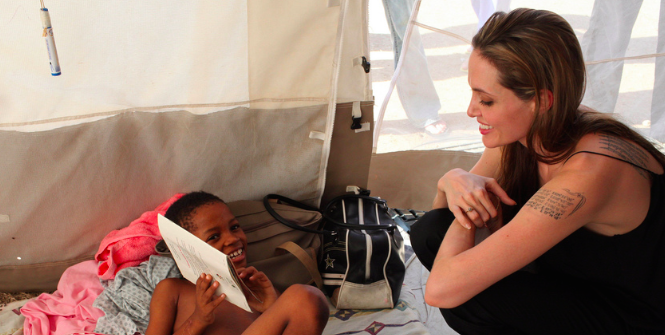Only Fools Rush In? Disaster Zone Adoptions.

In times of disaster, adoptive parents are more likely than ever to open their hearts and their homes to displaced foreign children, hoping to provide a child a life of stability and support, out of the devastation.
This trend was observed after the 2004 Boxing Day Tsunami and the 2010 Haitian Earthquake. Yet recent analysis of the fundamental legal principles underpinning intercountry adoption, which is governed by the 1993 Hague Convention on Intercountry Adoption (“The 1993 HC”), questions the legitimacy of “fast-tracked” intercountry adoptions after natural disasters. Are disaster zone adoptions genuinely humanitarian, or actually harmful acts? And what lessons, if any, have authorities learned for the aftermath of the catastrophic 2015 Nepal Earthquakes?
In the modern history of intercountry adoption, geopolitical and environmental disasters have provided the catalyst for many instances of widespread, permanent removal of children from States of origin in the name of humanitarianism. These include the Korean and Vietnam wars, the collapse of the Soviet bloc, famines in Africa, earthquakes, floods, and tsunamis.
Yet the longstanding view that disaster zone adoption is a humanitarian act is now largely discredited. Under the 1993 HC, intercountry adoption is, first and foremost, a legal act; it is a filiation which must be adjudged as necessary for a child’s protection.
Indeed, in rushing to become “rescuers”, prospective adoptive parents may actually undermine many of the 1993 HC’s fundamental legal safeguards, which exist to protect the child’s best interests.
The Best Interests of the Child and the “Subsidiarity Principle”
Pursuant to the 1993 HC’s preamble, States conducting intercountry adoptions must have uncompromised regard to the child’s best interests.
The child’s “best interests” are informed by the “subsidiarity principle”, which requires that States consider in-country care placements for adoptable children in their birth country, prior to international care placements, such as intercountry adoption. Domestic placements which must first be considered include:
- reuniting the child with his/her birth-parents;
- adoption within the child’s extended family; or
- adoption by another family in-country.
These options are considered preferable due to the child’s perceived best interests favouring preservation of contact with the child’s first family, language, culture and national identity.
As intercountry adoption would result in the permanent, and irreversible removal of a child, even in disaster zones, the subsidiarity principle must be respected, and intercountry adoption can only be considered once domestic remedies have been fully explored.
The Demand-Based Market for Adoptable Children
Due to the success of domestic placements of adoptable children under the subsidiarity principle, there has also been a commensurate decrease in the number of children available for intercountry adoption by parents abroad.
For this reason, often “demand” for intercountry adoptable children far outweighs “supply”.
Indeed, Australian experts Cuthbert & Fronek have noted a distinct switch to a demand-based – rather than a needs-based – market for adoptable children.
This demand for adoptable children is an ongoing problem in the 1993 HC’s operation. Indeed, it is one taken seriously by states, and the issue received attention during discussions of illicit practices at the Hague Conference on Private International Law’s (“HCCH”) recent Special Commission on Intercountry Adoption, held in June 2015.
Haiti: A Dangerous Mix of Disaster Zones, Subsidiarity, and the Adoption Market
In many ways, disaster zones provide a perfect storm for the confluence of many issues confronting modern intercountry adoption, combining the increase in demand for adoptable children, with a decrease in regulatory presence by adoption authorities, due to the general chaos of a disaster zone.
These conditions create unscrupulous intermediaries, seeking to profiteer by creating “adoptable children” for the intercountry adoption market, without regard to the child’s best interests, or his/her family, or culture, in blatant contravention of the subsidiarity principle.
This practice was suspected in the aftermath of the 2010 Haiti earthquake. In Haiti, there was first a tremendous demand for adoptable children, the result of humanitarian responses. Some of these responses were actively encouraged: ISS reports that Spain and the USA called for fast-tracking of adoptions, whereas other organisations, including International Red Cross, World Vision and Save the Children requested an immediate moratorium. ISS also reports that Canada, USA, Luxembourg and Belgium almost tripled their numbers of intercountry adoptions in the months following the earthquake. There was decreased regulatory presence, as Haiti’s Adoption Authority (IBESR) became overwhelmed. Then, finally, ISS reported anecdotal examples of illicit practices: that some biological parents were not consulted for adoption consents, that adoption fees varied greatly amidst claims of racketeering, and that orphanages unaffected by the earthquake attempted to fast-track adoptions under the guise of the crisis. There are also disturbing reports of US missionaries trying to smuggle 33 Haitian children to the Dominican Republic without proper visa documentation.
These and other terrible acts either directly or indirectly subverted the safeguards of the 1993 HC. Indeed, without full legal investigation into each child due to fast-tracking of adoption cases, some of Haiti’s “adopted” children may not have been legally adoptable. If so, they may have been trafficked; from families who loved them, or from a domestic placement which would have allowed them to preserve links to their heritage.
Clearer Policy on Disaster Zone Adoption
In 2015, it is firmly settled that states must suspend intercountry adoption procedures after disasters. As the organisation responsible for the creation and ongoing operation of the 1993 HC, the HCCH has enunciated this policy in several publications, which has now received mainstream recognition.
This includes a 2004 recommendation published in light of the Boxing Day Tsunami in the HCCH’s Guide to Good Practice No 1. The recommendation advises, inter alia, that before conducting any intercountry adoption procedure, receiving States must ensure “all reasonable measures have been taken… to trace and reunite the child with… parents or family members where the child is separated from them.”
The 2010 Special Commission confirmed the desirability of moratoria during natural disasters in its Conclusions and Recommendations, advising, that in disaster situations: “[n]o new adoption applications should be considered in the period after the disaster… before the authorities… are in a position to apply necessary safeguards.”
Nepal’s Post-Earthquake Adoption Landscape
In light of the HCCH’s clear policy guidance, in the aftermath of Nepal’s disastrous earthquakes of April and May 2015, receiving States under the 1993 HC should ordinarily suspend intercountry adoption procedures with Nepal until the situation is normalised. Under the subsidiary principle, local efforts in Nepal to reunify a displaced child with his/her parents or family members must take first priority, followed by assessing domestic adoption or child protection mechanisms available, and only then followed by intercountry adoption.
Encouragingly, it appears that Nepal may have learned the hard lessons of Haiti. In late May 2015, to curb child trafficking, Nepal’s Ministry of Women, Children and Social Welfare introduced, of its own initiative, a complete moratorium on adoptions. This ban reportedly came after the attempted trafficking of 59 children out of Nepal. In support of the ban, Joint-Secretary Radhika Aryal stated, “children are at high risk of becoming trafficking victims during disaster as they can be lured by traffickers with the prospect of comfortable life and better education.”
Nepal’s suspension of intercountry adoption processes provides positive signs for the future of disaster zone adoption. Whilst acknowledging that intercountry adoption may provide direct relief to child victims of natural disasters, Nepal’s stance rejects premature and unregulated attempts to process intercountry adoption files.
Conclusion
Despite the human desire to help in times of disaster, Intercountry adoptions cannot exist as a knee-jerk humanitarian response. They can cause irreparable harm to children, depriving them of their family, language, and culture. The fast-tracking of adoptions in the name of humanitarianism, cannot, should not, be used to short-circuit the 1993 HC’s carefully crafted safeguards.
Derek Bayley holds a BA/LLB(Hons I) from the Australian National University. He is the 2015 Peter Nygh Intern to the Hague Conference on Private International Law (co-sponsored by the Australian Institute for International Affairs). This article can be republished with attribution under a Creative Commons Licence.





